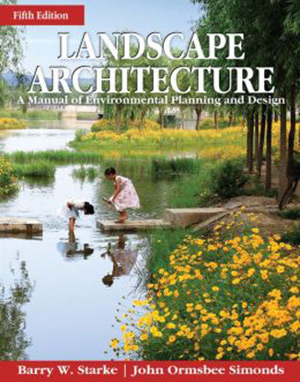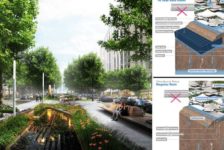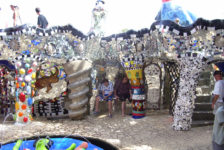A book review of the world famous landscape architecture book Landscape Architecture: A Manual of Environmental Planning and Design, by Barry W. Starke and John Ormsbee Simonds. For landscape architects, John Ormsbee Simonds’ book is our bedside book. It has not been just a manual for me; it is the book of landscape architecture theory. It has been a reference in my profession since I was studying and now is also a reference for teaching. The new edition — the fifth one, co-authored by Barry W. Starke — is really attractive, because it has all the essence and knowledge of Simonds, enriched to incorporate sustainability – which is the basis of landscape design — and include different examples of recent built projects. Throughout the pages of this book, the texts, quotes, sketches, and images of projects create a combination of visual and theory.
Landscape Architecture: A Manual of Environmental Planning and Design
What’s inside? The contents of the book have been updated to include the actual vision of the designer and planner, and to portray in essence the way to approach landscape: from the first elements, understanding nature and the relation between humans and nature; to the elements that form and define the landscape, climate, water, land, and vegetation, as well as what is vital for landscape architects — the visual landscape, as a resource and goal. The next part of the book explains the complexity of landscape and the different landscapes in which we intervene. It is the combination of context and human intervention that determines the character of a place and its landscape. There the book focuses on planning and management, the difference between regional and urban design, and the importance of site planning. Get it Here! The last section refers to the elements incorporated in a project that are the basis for defining it: site spaces, circulation, structures, and planting. As an epilogue, the last chapter, Perspective, is a reflection of Simonds on his work and experience, his findings throughout time, and the knowledge achieved through his practice and from his projects — gaining an understanding of the work of a landscape architect. Why it’s important In this era of media communication, it is important to understand that landscape architects and designers do not need recipes to develop a project. We solve the problems we encounter through creativity. This book is our reference on how to approach a project and that will guide us to achieve the best solution. It is a reference that serves as an introduction to landscape design and understanding it. The most valuable elements of this book are the sketches – by hand (yes by hand) — accompanying the text to illustrate the different concepts in landscape and design, since sketching is the main tool of a designer. On some pages of the book, the sketches are less prominent in size and location than in first editions, and that I think should be corrected. The sketches are already part of my visual memory and will be for others who study the book. It is also a book that I have been quoting, and you will also begin to do so, after you read it, learn from it, and experience it. And about experience, I refer to a quote of the book, “One plans not places, spaces, or things; one plans experiences.”Pick up your copy of Landscape Architecture: A Manual of Environmental Planning and Design
Publisher: McGraw-Hill Professional; 5th Edition (February 6, 2013) Type: Hardcover Page length: 432 pages Article by Mónica Pallares-Trujillo Return to Homepage
Published in Blog











